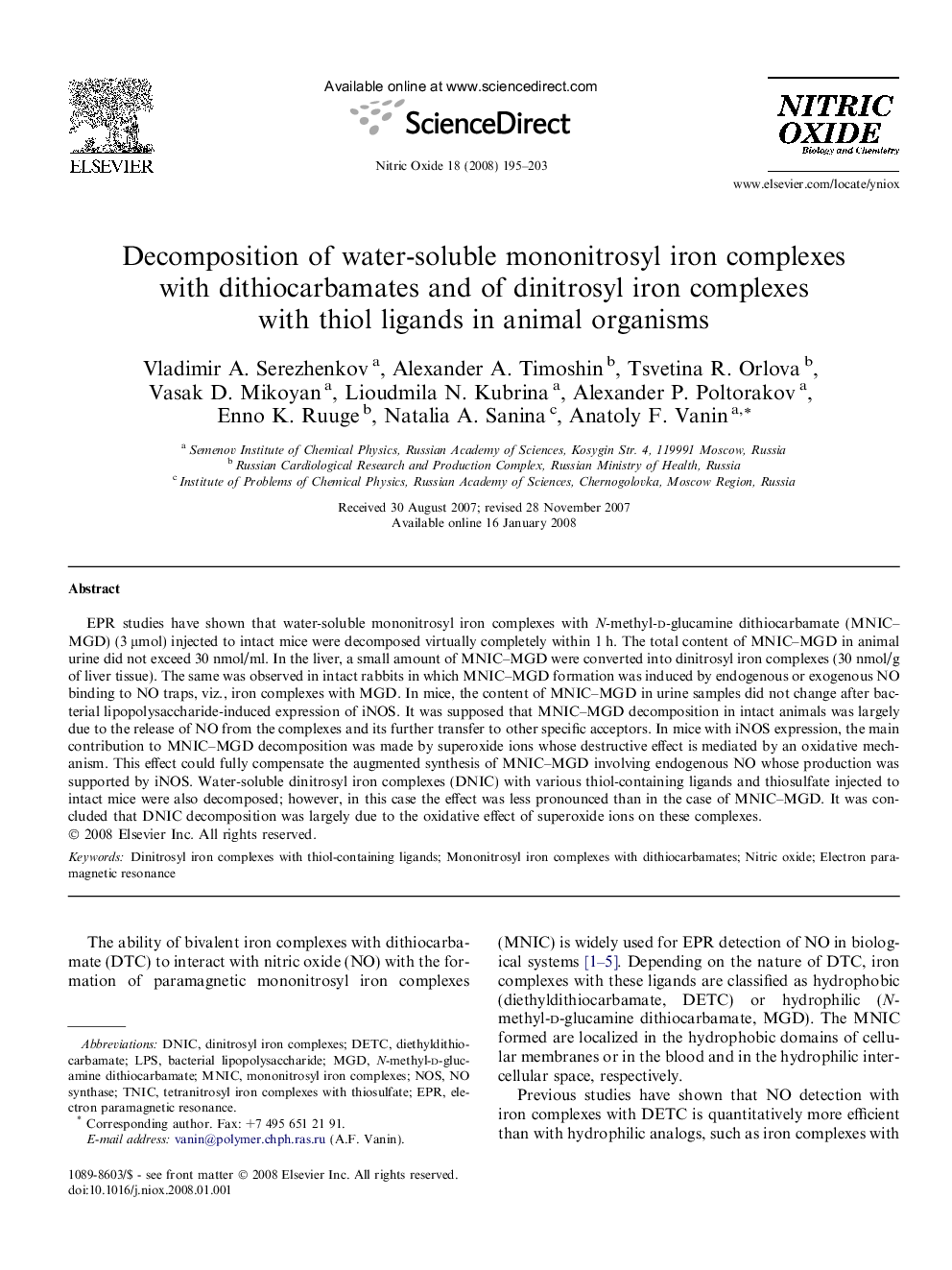| Article ID | Journal | Published Year | Pages | File Type |
|---|---|---|---|---|
| 2001727 | Nitric Oxide | 2008 | 9 Pages |
EPR studies have shown that water-soluble mononitrosyl iron complexes with N-methyl-d-glucamine dithiocarbamate (MNIC–MGD) (3 μmol) injected to intact mice were decomposed virtually completely within 1 h. The total content of MNIC–MGD in animal urine did not exceed 30 nmol/ml. In the liver, a small amount of MNIC–MGD were converted into dinitrosyl iron complexes (30 nmol/g of liver tissue). The same was observed in intact rabbits in which MNIC–MGD formation was induced by endogenous or exogenous NO binding to NO traps, viz., iron complexes with MGD. In mice, the content of MNIC–MGD in urine samples did not change after bacterial lipopolysaccharide-induced expression of iNOS. It was supposed that MNIC–MGD decomposition in intact animals was largely due to the release of NO from the complexes and its further transfer to other specific acceptors. In mice with iNOS expression, the main contribution to MNIC–MGD decomposition was made by superoxide ions whose destructive effect is mediated by an oxidative mechanism. This effect could fully compensate the augmented synthesis of MNIC–MGD involving endogenous NO whose production was supported by iNOS. Water-soluble dinitrosyl iron complexes (DNIC) with various thiol-containing ligands and thiosulfate injected to intact mice were also decomposed; however, in this case the effect was less pronounced than in the case of MNIC–MGD. It was concluded that DNIC decomposition was largely due to the oxidative effect of superoxide ions on these complexes.
